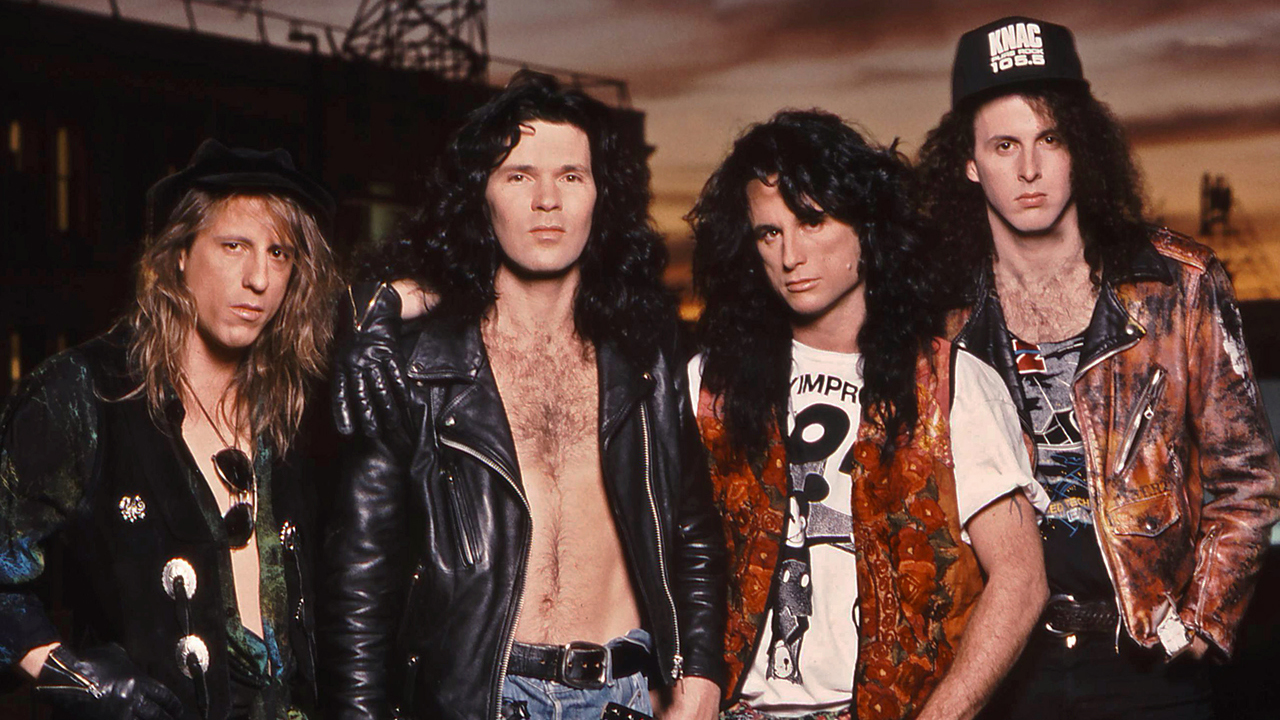
All images courtesy of Getty Images

By Andrew Daly
[email protected]

By the end of the 1980s early 1990s, Glam and Hair Metal were reaching an apex. A storm was coming, but the haze of glitter, hair spray, and ego was so thick in the air, that record executives and musicians alike simply couldn’t see it.
The charts were filled with hits from bands hailing from every corner of The Strip and were even filtering in from New York, and Philly. Lines were stretching for miles, and miles at clubs like The Whiskey, The Rainbow, and The Troubadour, and with stars in their eyes, and fever in their dreams, young men and women laid it all bare for a chance at Heavy Metal infamy.
We’ve already Returned To The Sunset Strip with part one of this series, and we hit The Road To The Roxy in part two. We’re back again to dig into some of the 1980s, and early 90s most underrated Hair and Glam Metal albums, one’s which will forever live in the annals of history as records that could have been, should have been, but for whatever reason – weren’t.
Some you may know. Some you may love. And some you may be happily recalling for the first time in years. No matter the case, we’re here to see how things unfold, as The Headbangers Ball Reaches Its Edge. Let’s dig into Ten Glam & Hair Metal Albums Part III.

Heavens Edge – Heavens Edge (1990)
By 1990, while Hair Metal was still riding relatively high, there were cracks that were beginning to show throughout the scene, if only on the surface. Grunge was creeping in, couple that with the high saturation rate of bands on both the east and west coast, and you more or less spell out a death sentence for the 80s most wild and crazy genre. Amidst all the chaos, a hard-edged group out of Philly, led by Mark Evans, called Heaven’s Edge dropped their debut record, Heaven’s Edge. Columbia Records had signed the band in the late 80s and immediately put the band to work. There was no indication that the album would be anything but a success, and every reason for it to succeed. Heaven’s Edge was a band that had the aesthetic along with the chops. Evans’s soaring vocals, emotive lyrics which were effortlessly latched to huge choruses, bookended by Reggie Wu’s fierce guitar work gave the members of Heaven’s Edge, and Columbia Records every reason to believe that Heaven’s Edge would be a major hit. Still, the album stalled at number 141 on the Billboard Charts, and the band slowly drifted into obscurity, releasing the aptly titled, Some Other Place, Some Other Time, in 1998, and reuniting for occasional shows since. Heaven’s Edge is unique in that its music carries a certain grizzled quality to it, which is probably a product of its east coast roots. If you’ve not heard this album — change that.

WildSide – Under The Influence (1992)
Often referred to as, “The best Hair Metal band you’ve never heard of,” WildSide was a case of a band that came on just a bit too late. If Drew Hannah, Brent Woods, and crew had dropped their rager of a Hair Metal classic, Under The Influence, just a few years prior, we might be talking about WildSide in the same conversation as bands such as Poison, Bon Jovi, Ratt, and the like. Alas, WildSide dropped this record in 1992, after Pearl Jam, Nirvana, and Soundgarden had taken over the Rock and Metal charts. In addition to poor genre timing, Under The Influence was also delayed nearly a full year due to label difficulties through Capitol Records, who reportedly saw the writing on the wall, and simply chose not to prioritize the album. When the record finally did come out, the result was not only a tepid commercial response from an overwrought, overtired fanbase, but WildSide also lost out on its opening slot with Van Halen, who were embarking on their massive For Unlawful Carnal Knowledge tour, which could have effectively put the band on the map. Instead, the band sat at home, waiting on a record to be released for a full year, with no label help, and no one to play for. While WildSide would never go on to the stardom they were thought to be destined for, the band would hang tough, and stay together, releasing Wildside in 1995, and The Wasted Years in 2004. It’s a damn shame that one of the grimiest, makeup-caked and hook-laden groups of a generation never got the chance to conquer the charts. At the same time, it’s inspiring and refreshing to see that WildSide stuck it out, and weathered the Grunge storm while continuing to play their music on their own terms, even if it wasn’t on a global, world-dominating scale.
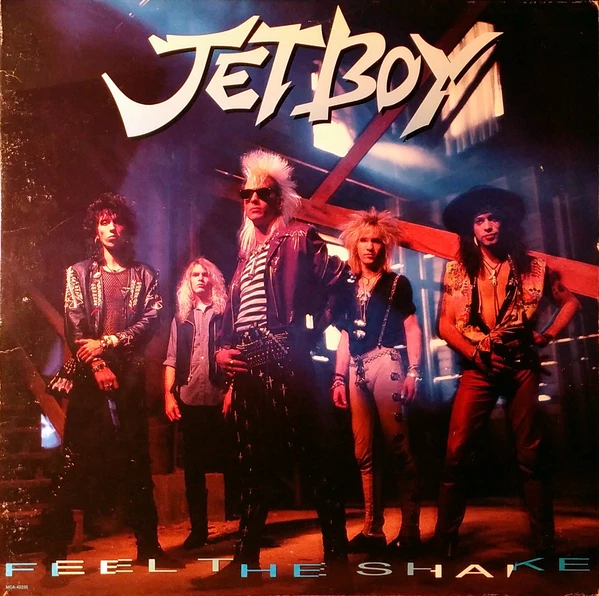
Jetboy – Feel The Shake (1988)
In the mid to late 80s, most of the hair spray permeating around the ozone was emanating out of LA, and so when a party-loving, girl-chasing, beer-chugging, whiskey-shooting band out of San Francisco showed on the doorstep of Hair Metal’s proverbial Castle In The Sky, it was a bit of a surprise as the land of Peace, Love and Hippies generally wasn’t known for its Hair Metal. The Bay Area had a burgeoning underground Thrash scene, sure, but the glitz and glam of Hair Metal were generally reserved for The Sunset Strip. As it was, once Billie Rowe and Fernie Rod’s Jetboy gained the attention of executives in Hollywood, they bolted down the coast, and hit The Strip as hard, and fast as they could. Soon after signing a deal with Elektra Records, in 1986, original bassist Todd Crew left the band and sadly overdosed in a hotel room with Slash of Guns N’ Roses shortly thereafter. The Metal Gods were shining down on Jetboy however as Sami Yaffa of Hanoi Rocks fame (who was a huge influence on Jetboy) was something of a free agent at the time. Just two years prior, Hanoi Rocks had come to end due to the untimely death of the band’s drummer, Razzle, who perished in a car accident while under the influence with Vince Neil at the wheel. Anyway, Yaffa joined Jetboy on bass, and the band recorded its debut, Feel The Shake, which was released in 1988…to an, unfortunately, less than stellar response. While the record itself was nothing short of fantastic, the biggest issue with Jetboy was they were too eclectic for their own good. Feel The Shake was a Hair Metal record at its core, but it featured many influences ranging from Punk, Classic Rock, and Blues, which simply weren’t glammy and hooky enough for the audiences at the time. While most who bought the record loved it, unfortunately, mainstream radio barely played the album, and the band never really broke off the indie circuit as a headlining act. Ultimately, Feel The Shake would stall at number 135 on the Billboard 200, and that’s about as good as it got for Jetboy at the time. The band soldiered on and released Damned Nation, in 1990, and eventually whimpered to a halt in 1993. A sad ending? Not so much, as that’s not where the story ends for Jetboy. In the early 2000s, the band regrouped and has released five more records, with the most recent being, Born To Fly, in 2019. In the ensuing years, Jetboy has continued to gain popularity and has continuously played festivals across the US and Europe. For Jetboy it’s a classic case of better late than never.

XYZ – Hungry (1991)
The early 90s was a volatile time for both Hair Metal, and Hard Rock. In general, bands needed to be extremely careful how they proceeded forward both musically, and aesthetically. Well, it seems that the “unofficial house band of The Whisky A Go-Go,” XYZ, didn’t get the message with their 1991 release, Hungry. Now, truth be told, we could have picked any album by XYZ, as the band is criminally underrated in general, but the notorious nature and overall ferocity of Hungry landed it on this list. While XYZ’s debut, the Don Dokken produced, XYZ, was a modest success, ultimately the album’s “hits” only peaked as high as number 99 on the Billboard 200. Still, there was hope for the band that their sophomore record would make a bigger splash after the group made a move from Enigma Records over to a major label, Capitol Records. Alas, it was not to be, and upon its release, Hungry failed to chart at all. Soon after, Tony Marcus and Joey Shapiro left the band, and after the supporting tour for Hungry, XYZ dissolved as a band altogether. As for Hungry, while it received little to no airplay in a Grunge-soaked market, this album is an absolute molten lava firestorm, with tracks such as “Face Down In The Gutter,” and “Shake Down The Walls” becoming fan favorites over time. As I eluded to earlier, Hungry is notorious for its lurid cover art, which features scantily clad, fearful-looking women, being slobbered all over by hungry wolves. It’s about as sleazy as it gets, and honestly, it suites the genre well, but, it also led to the album completely being shut out on programs such as Headbangers Ball, and other MTV music-related shows, which would have given the record critical airtime. XYZ reconvened in 2002, and while they’ve only released one album since their reunion, 2003’s Letter To God, the band is going stronger than ever on the festival circuit, where hungry fans are treated to a healthy serving of tracks from this truly depraved record.
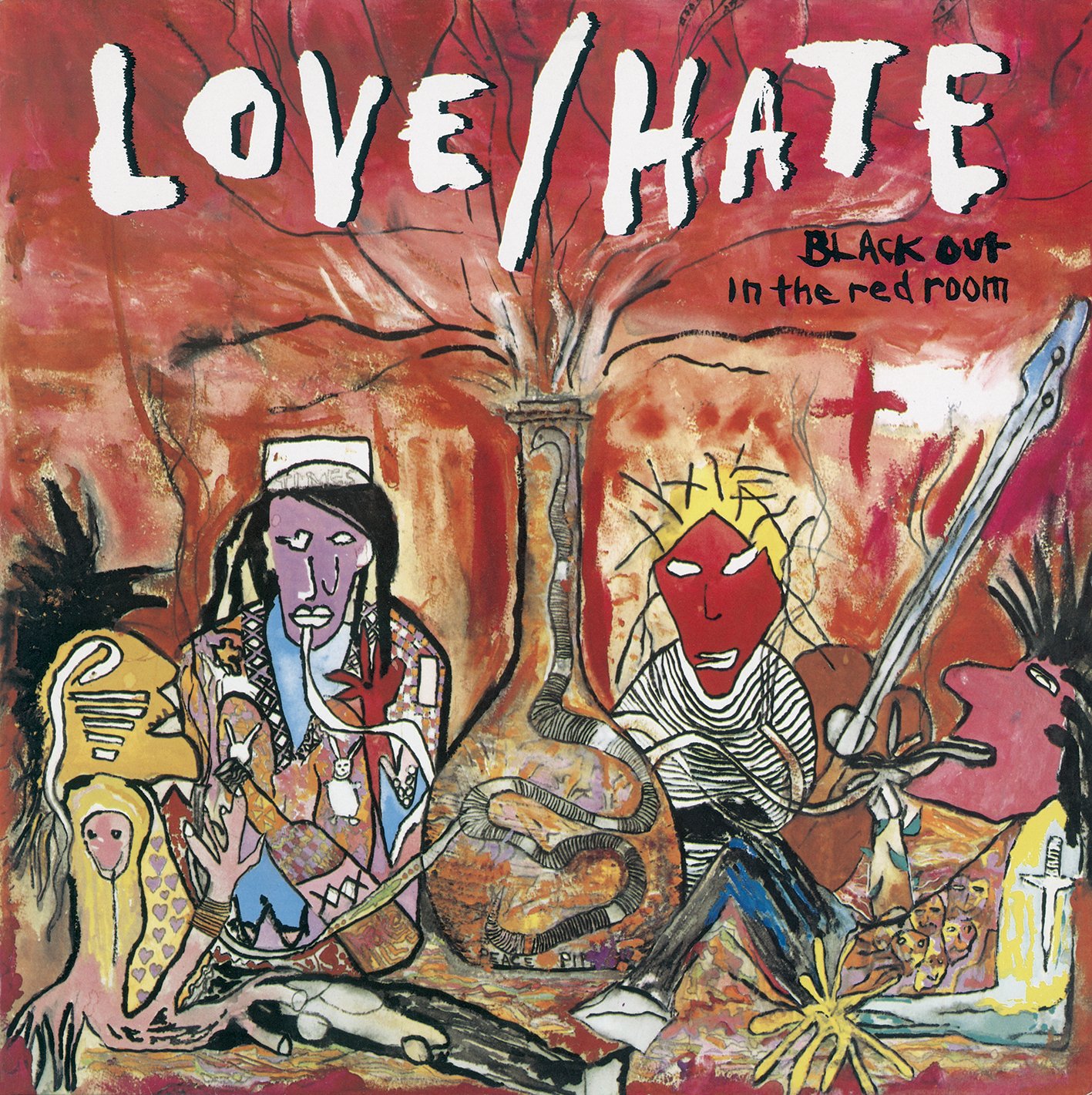
Love/Hate – Blackout In The Red Room (1990)
Love/Hate is a perfect example of a band battling for the Rock ‘N’ Roll dream. After years of grinding away in the depths of the LA Glam and Hair Metal scene, as an unsigned band, who couldn’t get a lick of attention, Love/Hate finally managed to catch the eye of a major label. In 1988, Columbia Records, on the strength of Love/Hate’s four-track demo, which was recorded in the SoulHouse, which in reality, was a warehouse the members of Love/Hate had been living in since 1985. For Skid Rose, John E. Love, Joey Gold, and the effervescent, Jizzy Pearl, the recording of their debut record, Blackout In The Red Room, was a dream come true, and an affirmation that their asperations of Sunset Strip domination were perhaps about to become a reality. On the back of a decent push from Columbia, Blackout In The Red Room steadily rose up the Billboard 200 in the early months of 1990 and even received solid rotation on MTV’s Headbangers Ball, but suddenly, the record stalled, and never climbed any higher than number 154. For whatever reason, be it oversaturation, bad luck, or bad timing, Blackout In The Redroom simply didn’t hit, and it’s a shame as tracks such as “Blackout In The Red Room,” “Why Do You Think They Call It Dope?,” and “One More Round,” among others, demonstrate just how good of a band Jizzy Pearl and company were. As the 90s soldiered on, Love/Hate was more often than not, known for their off-stage behavior than their music, with memorable moments such as the band’s Holywood Sign stunt, and Jizzy Pearl getting into a drunken fistfight with Skid Row lead singer, Sebastian Bach, while on a supporting tour. The band eventually broke up in 1999, only to reform in 2002, with Jizzy Pearl being backed by an entirely new, and a revolving cast of characters, which still are holding it down to this day. While the group hasn’t released a new record since 1999, Jizzy and his band of merry men are a fun live show, one which you should check out if you have the chance.
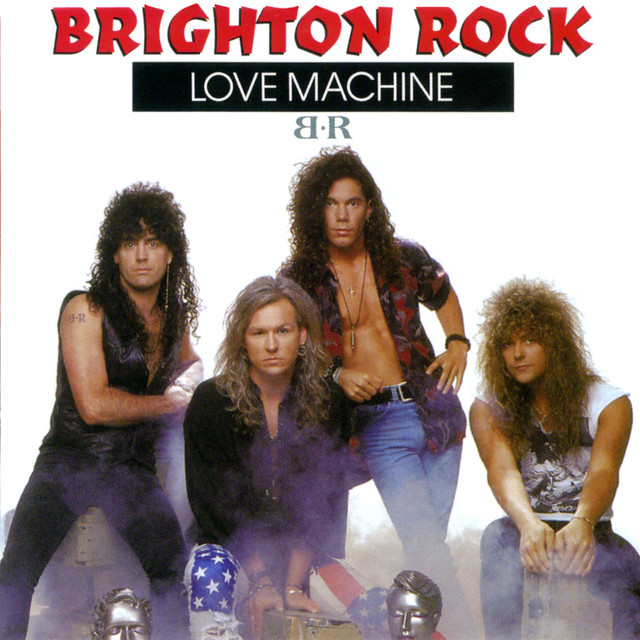
Brighton Rock – Love Machine (1991)
While there is great reverence for the bands which came out of L.A., NYC, and Philly during the golden age of 80s Hair Metal, there is little thought given to the Canadian scene. While there were several fantastic bands that came out of the Canadian Hair Metal scene, Brighton Rock is probably the best, and perhaps, most memorable of the bunch. The origins of Brighton Rock date back to around 1982, and the band, led by Gerry McGhee on vocals, and the fantastic, Greg Fraser on guitar dropped their debut record, Young, Wild And Free, in 1986, via Warner Music Group. The album didn’t make much noise in the American market, but north of the border, in Canada, the album spawned the hit singles, “We Came To Rock,” and “Can’t Wait For The Night.” Soon after its release, Young, Wild and Free was certified gold by the CRIA and charted as high as number 82 on the Canadian charts. The band recorded its follow-up, Take A Deep Breath, in 1988, and once again, the record was certified gold, and charted as high as number 22 in Canada. While Take A Deep Breath was a commercial boon in their home country, the band continued to be eluded by success in the ever-important American market. Furthermore, Take A Deep Breath saw Brighton Rock heavily soften its sound, which did not sit right with some fans. Brighton Rock continued to slave away, touring constantly, and in 1991, they recorded what amounted to their heaviest, and final record, Love Machine, which saw the band forgo the keyboards, and make a concerted effort to once again, toughen up their sound. While Love Machine is perhaps Brighton Rock’s finest hour musically, the album failed to chart and had no hit singles to speak of, and after the supporting tour, Brighton Rock quietly broke up. In 2001, the band regrouped and forged onward, recording a few singles here and there until the death of Gerry McGhee, in 2020. As for Love Machine, the record stands as a living document that while LA was a proverbial hotbed for Glam and Hair Metal, it wasn’t the only breeding ground for the genre. If you haven’t dived into the Canadian Hair Metal scene of the 80s, strap in, you’re in for a fun ride.
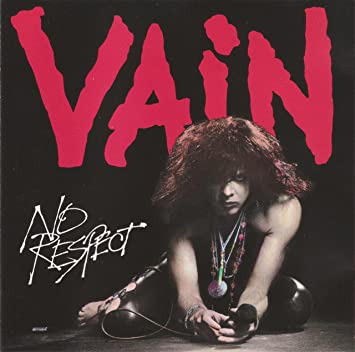
Vain – No Respect (1989)
The trajectory of one of the sleaziest bands to ever hit the circuit, Vain, is an interesting one, to say the least. The band’s leader, Davy Vain, began his career as a record producer, and subsequently recorded a demo with Metallica’s lead guitarist, Kirk Hammit, in 1986. The recording inspired Davy Vain to form a band, and thus Vain was born with Ashley Mitchell on bass, Tom Rickard on drums, Danny West on rhythm guitar, and the fantastically talented Jamie Scott (now known as Dylana Nova) on lead guitar. Vain played up and down the west coast, making a name for themselves in the Bay Area, and then on The Strip, in LA, where they opened for an early incarnation of Guns N’ Roses. It wasn’t long before major labels came knocking, and soon, the band spurned mega label, Geffen Records, to sign with the smaller Island Records, a decision which would prove to be a critical misstep for the band’s trajectory. Onward and upward, Vain recorded its balls-to-the-wall debut record, No Respect, shortly thereafter, and upon the album’s release, in 1989, the record was a critical darling, but commercially, things were a different story. Even with the band being featured on the covers of Kerrang! and BAM, Island Records simply couldn’t promote the album in the same way that Geffen could have, and No Respect stalled out at number 154 on the Billboard 200. Musically, No Respect is one of the most badass records of its era. Tracks such as “Beat The Bullet,” “Who’s Watching You,” and “Aces” are straight-up sleaze-laden shotgun shells propelled forward at breakneck speed, with zero regard for stop signs. This album oozes swagger and machismo, and it’s a crime that more people haven’t been turned onto it. After the release of the record, Vain toured with Skid Row to no avail. Vain reconvened in 1990 and quickly recorded its follow-up, All Those Strangers, but before it was to be released, Vain was unceremoniously dropped by Island Records, in 1990, when the label was bought out by Polygram. Shortly thereafter, Steven Adler of Guns N’ Roses fame joined the band, and the band’s name was changed to “Road Crew,” an incarnation of the group which also flopped. In 1993, Davy Vain reformed Vain, and for the most part, the band has been going strong on the indie scene ever since. While Vain never reached true mainstream success, all of the original members are still intact, and the group continues to record on their own terms. Retrospectively, the aptly titled, No Respect, is considered one of the premiere albums of its era, and yet, still, too many haven’t heard it. If you’re one of those people — change that.
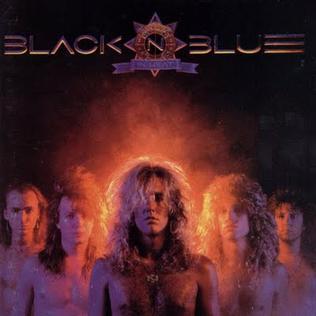
Black ‘N Blue – In Heat (1988)
It’s not a stretch to say that Black ‘N Blue was one of the most talented bands of the 1980s Glam and Hair Metal era. The duo of Jaime St. James and Tommy Thayer were nothing short of the Hair Metal version of Jagger/Richards or Tyler/Perry — they were that good. The band had talent, swagger, and tunes to back it up. Jaime St. James had pipes that would put Vince Neil to shame and would make Jon Bon Jovi weep, and their four albums which were released in the heart of the Hair Metal era, Black ‘N Blue, Without Love, Nasty Nasty, and In Heat were easily some of the finest music of the decade. Sure, the band wasn’t without its well know anthems, with “Hold Onto 18,” and “Nasty Nasty” perfectly capable of making any 80s Rock playlist to this day. Still, Black ‘N Blue did not, and do not get their due, and when it comes to In Heat, the band may well have laid to tape their masterpiece. To date, for now, In Heat was the Black ‘N Blue’s last record to feature the also underrated, Tommy Thayer, who left the band shortly after the album’s release, and subsequent touring cycle in 1988/1989, which effectively ended the first chapter in Black ‘N Blue’s story. Going back to the album itself, it’s heavy, sleazy, and riff centric, and effortlessly showcases the songwriting partnership of St. James/Thayer. Also of note, the record was produced by Gene Simmons of KISS. Even with a stable of fantastic tunes, great musicianship, and the Gene Simmons factor, In Heat still only rose to number 133 on the Billboard 200. Black ‘N Blue was always a star-crossed band, which never seemed to be in the right place at the right time, and while their songs were always as good, if not better than their contemporaries, they never seemed to catch a break. Looking back, while the band never seemed to fully explode, we are left with a body of work that any band would be envious of, and we can all be happy that Jaime St. James and company are still kicking after reuniting in the mid-2000s. Here’s to hoping that Tommy Thayer hits the road with the mighty Black ‘N Blue once again once KISS finally wraps things up. Until then, jam out to In Heat, and fully embrace one of the most talented bands of the era.
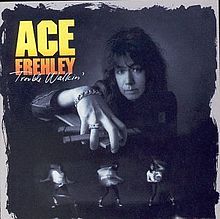
Ace Frehley – Trouble Walkin’ (1989)
No list of Glam and Hair Metal would be complete without at least one member of KISS, AKA the glam originators making an appearance, and as we reach the apex of this thing, we come to Ace Frehley’s masterwork, 1989’s Trouble Walkin’. After taking a few years off to recover, and sober up, Ace stormed back with 1987’s Frehley’s Comet, and 1988’s career lowlight, Second Sighting. Now, when it comes to Space Ace’s first two post-KISS outings, they were released under the aforementioned moniker “Frehley’s Comet,” with the idea of Ace working within the confines of a true band, and not as a solo artist perse. Still, most people weren’t interested in Ace as a member of a band, they simply wanted to see Ace anyway they could have him, and so, with the release of Trouble Walkin’, Ace shed the “Frehley’s Comet” name, stepped out into the spotlight, and put the record out under his name, but interestingly enough, kept the personal intact, with a few notable rearrangements. First, Ace parted ways with Tod Howarth, who is a class act, and a wonderful talent, but was probably too much of a showman for Ace’s liking, especially when Ace is supposed to be the main attraction. Next, Ace made the wise choice to bring the ever-thunderous Anton Fig back into the fold, which was everything that Second Sighting was lacking. The presence of Anton Fig was a true game-changer musically for Trouble Wlakin’. Ace was also smart to keep the ever-solid, John Regan, onboard for bass duties. But the biggest addition was the insertion of Richie Scarlet into the band, who replaced Tod Howarth. Richie Scarlet was drafted in the image of Ace, and as a hard-edged rocker through and through, Richie was the toxic crazy glue that would help hold Ace’s solo band together going forward. As for Trouble Walkin’, you’ve got classic Ace covers in “Hide Your Heart,” and “Do Ya,” and you’ve got filthy dirty tracks such as “Five Card Stud,” and “Shot Full Of Rock.” Basically, when it comes to Trouble Walkin’, you’ve got it all, and it’s buttoned-up neatly with Ace’s classic glam edge, coupled with modern Hair Metal stylings. If you weren’t aware, now, you’re officially on notice — Trouble Walkin’ is Ace Frehley’s best record. Furthermore, it’s perhaps one of the best recordings the Hall Of Fame guitarist was ever associated with. Period. Dig it.
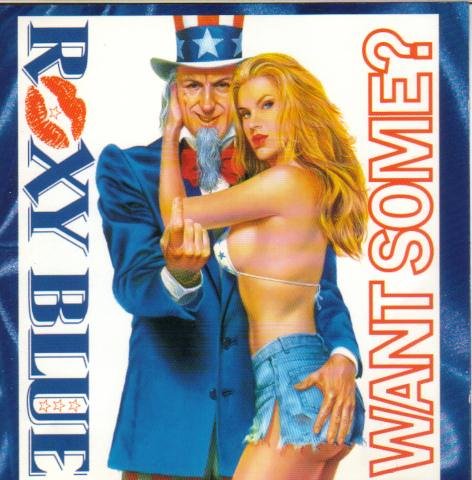
Roxy Blue – Want Some? (1992)
As mentioned earlier, Hair Metal and Glam seem to have their roots buried deep in the west and east coast scenes, but sometimes, the magic fairy dust that seemed to be cascading over LA, and NY throughout the 80s would settle elsewhere, and in the case of Roxy Blue, it was in Memphis, Tennessee of all places. Formed in 1990, by vocalist Todd Poole, drummer Scott Tramwell, bassist Josh Weil, and the should-have-been-generational lead guitarist, Sid Fletcher, Roxy Blue signed to Geffen Records a matter of months after the band’s inception and was seemingly set to take the world by absolute storm. Seriously, Geffen rolled out the red carpet for Roxy Blue, and put untold amounts of resources into the band’s absolute monster of a debut, Want Some?. Geffen hired Mike Clink AKA the man who produced Guns N’ Roses Appetite for Destruction and followed that up with one of the most lengthy, and expensive promotional tours of the era, which included the members of Roxy Blue touring the nation, and being interviewed by seemingly every radio, and television outlet, including MTV’s ever-influential, Headbangers Ball. Roxy Blue was a band that honesty, and truly had it all, and Want Some?, is a record that is outstanding, heavy, and catchy from top to bottom, and if it had been released in say, 1987, the record would have gone platinum twenty times over, and we would be talking about it as one of the premier albums of its era with tracks such as “Too Hot To Handle,” “Sister Sister,” and “Main Attraction” serving as an absolutely showcase for the genre. But…Want Some? was not released in 1987…it was released in 1992…after Grunge had begun to take over. Instead of being revered for its incredible musicality, Want Some? instead acted as a harbinger for what was steadily approaching — the death of an era. Want Some? is an important album, as it is the literal, and physical manifestation of all the 1980s and early 90s Hair Metal era was. The boys in Roxy Blue were everything that era represented, and they probably did it better than anyone prior to them, still, they were to be the sacrificial lamb, they were to be the ones to end a genres dominance, a period, if you will, at the end of a very long run-on sentence. After the amount of money invested in Roxy Blue, and Want Some?, and its subsequent epic failure, major labels began to pull the plug on their Hair Metal acts across the board. Before Roxy Blue knew it, they went from being on the edge of stardom to being literal nobodies once again, and in 1993, Roxy Blue disbanded. Singer, Todd Poole, went on to be a founding member of, ironically, a well-known Nu-Metal/Grunge band, Saliva, and Sid Fletcher, one of the most talented guitarists of his generation, gave up on music, and became a dentist. While the story of Roxy Blue is a sad one, there is redemption, and in 2017, the band regrouped, without Sid Fletcher, and recorded their long-awaited follow-up, Roxy Blue, in 2019. To date, the band is moving forward, and perhaps at some point, Sid Fletcher will join them again. Still, it’s deeply disturbing that one of the most promising, and talented bands in all of the Hair Metal genre will always be remembered as the proverbial Grim Reaper of the genre’s heyday.
Many bygone eras of Rock and Metal music are looked back upon with great reverence, but for many, none of those eras can touch the Glam and Hair Metal scene of the 1980s, and early 90s.
In many ways, the Hair Metal era was the culmination of everything that Rock had been working toward thirty years prior. Bands such as KISS, Sweet, T-Rex, The Raspberries, and Starz laid a literal groundwork for the classic bands of the 80s era to do what they did. While acts such as Poison, Mötley Crüe, Skid Row, Guns N’ Roses, and more were truly singular, they would never have been able to accomplish what they did without the blueprints laid forth by their forefathers.
Present-day, there is a very real groundswell for the Rock music of the 1980s. The sullen mental gore of the 90s has swept on by, and perhaps the pompous, bloated, arrogance directed at our Hair Metal Heros has dissipated and allowed the dust to finally settle.
We’re seeing so many bands make triumphant comebacks, and these forgotten legends are seeing both their careers and music being unearthed and put on exposé for an entirely new generation of potentially adoring fans to enjoy.
While the era of the 1980s had its elements of humor, and camp, at the end of the day, these were serious musicians, who made some seriously fantastic, and unique music, music which will be forever remembered for its vibe, and aesthetic, as well as its catchy innovation.
While there will never be another era like it, we can still be overjoyed and excited about the fact that it happened, and that there are dozens upon dozens of bands, albums, and songs yet to be unearthed from that era. Yes, it seems that Hair Metal may be experiencing its second wind, and for that, we can all be thankful.
Here’s to hoping that your favorite Sleaze Rock act is hitting a stage near you. In the meantime, keep digging, and remember Rock music is supposed to be fun — don’t take yourselves too seriously.
Our Hair Metal heroes wouldn’t have it any other way.
Check out Part 1 here: Return to the Sunset Strip: 10 Underrated Glam & Hair Metal-Era Albums
Check out Part 2 here: The Road to The Roxy: 10 Underrated Glam & Hair Metal-Era Albums Part II
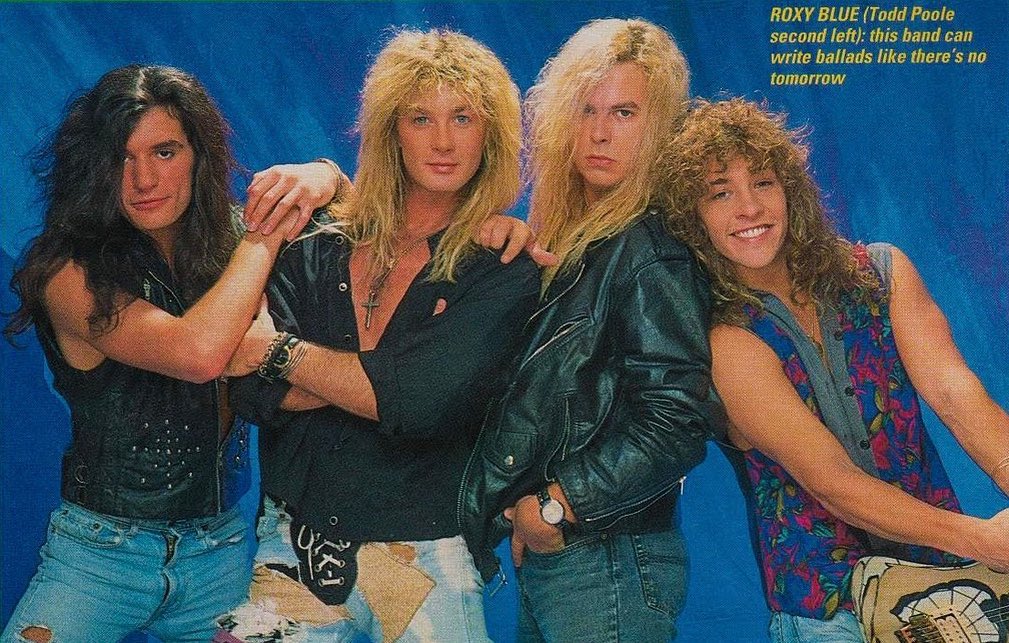
– Andrew Daly (@vwmusicrocks) is the Editor-in-Chief for www.vwmusicrocks.com and may be reached at [email protected]

Jet Red. Check it out. Got screws by Relativity Records.
After going back and reading parts I and II as well, these are amazing lists giving me many new and forgotten bands to explore from the greatest music era and genre. While I could see some saying they aren’t glam or hair metal, I’d like to recommend you include one of the first four or five albums from the legendary King’s X if you do a part IV.
Can’t believe the album, No Rules released in ’91, by Kik Tracee wasn’t anywhere on this list! Great album and their cover of Mrs. Robinson is fantastic.
Wow reading these three articles has been a blast, as a Brit we missed out on many of these bands and iTunes is currently being hammered by my credit card grabbing them, been a great series, new/old music from a great fun genre, well done one 3 great articles.
Thank you, Peter! You’ll be happy to know that part 4 is officially in the works. Stay tuned!
Great write up’s Andrew. I was, like you, in the thick of the mid-late 80’s ‘glory’ years and loved it then and, well, still love ‘most’ of these records now.
Reflecting on ‘hair metal’s’ demise, every genre has to adapt and evolve to survive and this one didn’t really try. I suspect a lot of hair metal bands couldn’t.
Arguably, GnR started the slide, simply by bringing a more authentic, lived-in lyrical perspective to the genre. After that, all the “ooh baby” bands were on borrowed time.
Take Roxy Blue’s ‘Want Some?’ album as a perfect example. What on earth were Geffen thinking that in ‘92, this was still relevant?
Musically it could have worked in 85-87, but in the early 90’s …… wow. That said, I’ve been to Memphis and it’s maybe no surprise .
Roxy Blue we’re still singing utterly cringeworthy songs about how wrong but so right it was to be chasing schoolgirls (‘Rob The Cradle’) and, I hope I am wrong about this, the dilemma of fighting the urge to sleep with your sister (‘Sister Sister’).
The world had moved on and while it’s fun to revisit the best the scene had to offer (Vain being the best ‘underrated’ band of all), let’s be honest, a lot of it needing putting out of its misery.
I, for one, will welcome a revival when it inevitably comes. If only to see some of these underrated bands get their due credit.
Peace and love.